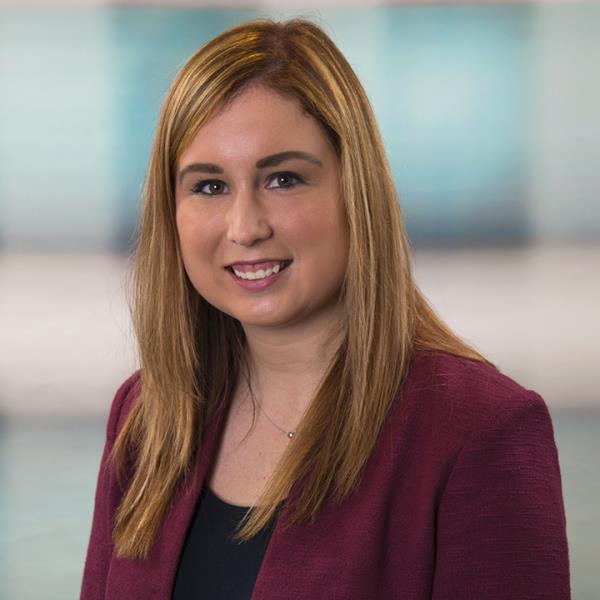May 16, 2023
Mature and Optimize K–12 Devices for Long-Term Success
With limited budgets and IT staff, schools must be strategic in ensuring devices meet pedagogical and technological needs.
IN THIS ARTICLE
The Most Common Challenges in a K–12 Device Ecosystem
Solutions and Services to Optimize Resource and Device Management
Characteristics of a Well-Managed Device Ecosystem
Why Schools Struggle to Manage Needed Devices in the Current Landscape
The Federal Communications Commission’s Emergency Connectivity Fund earmarked nearly $7.2 billion to help schools and libraries acquire technology to support remote learning during the pandemic. The ECF provided almost 13 million connected devices and over 8 million broadband connections. Now, however, districts must develop strategies to support, manage and eventually replace those tablets and laptops without the benefit of another cash infusion.
The rapid expansion of one-to-one programs had a significant impact on IT departments. In 2020, only 33 percent of districts managed more than 7,500 devices. By 2021, that had jumped to 49 percent, and only 6 percent of districts supported fewer than 1,000 devices. Adding to the challenges, many districts deployed various digital tools — often, whatever they could obtain amid supply chain shortages. Such inconsistencies were understandable during the crisis but now make it difficult to efficiently scale and manage device fleets.
K–12 districts need sustainable, affordable strategies to maintain device programs and optimize related investments. Such plans must cover not only the laptops and tablets but also the IT infrastructure to support and secure them; logistics of provisioning, managing and troubleshooting; and professional development to ensure teachers are skilled in integrating devices into pedagogy.
These factors are essential for schools to move beyond using technology to increase efficiency and collaboration toward what EY calls “third frontier” classrooms. “While only a small minority today are truly using technology to reimagine their approach to pedagogy and transform the learning experience for their students, in these third-frontier classrooms students typically use technology to drive their own learning while teachers are facilitators who oversee a very different classroom experience.”
With proactive funding strategies, districts can avoid having to jettison their expanded device deployments because they cannot support the next phase of refreshes. Planning will ensure districts can maintain and build on all their gains of the past few years.
Funding and managing the next round of devices may require a strategic mix of phased refreshes; third-party support for configuration, deployment and other logistics; break/fix services; and incident-based device protection plans.
Many schools are playing catch-up with cybersecurity tools and networking equipment to secure and support devices. Planning is critical to avoid supply chain delays with network hardware.
Above all, one-to-one programs must support districts’ and teachers’ pedagogical objectives. Consistency benefits IT staffers and the teachers who must incorporate these tools into their lesson plans.
Maintaining and maturing device programs pose challenges familiar to most K–12 districts: limited budgets and staff. While federal funding provided a welcome boost to expand one-to-one initiatives, schools must now determine how to optimize and retain these programs for the long term.
FUNDING LIMITATIONS
Schools should consider how to maintain device programs in the future, from replacing devices to funding IT staff to manage them. Pedagogically, once districts have established one-to-one programs, it is difficult to revert to using carts, sharing devices or being unable to pivot to remote learning when needed.
RETURN ON INVESTMENT
In addition to refreshing devices in a year or two, schools should find ways to extend the value of other investments they made to support device-based learning. Strategies could include training teachers, developing new curricula or adding or augmenting IT staff or solutions to support one-to-one programs.
IT DEPARTMENT RESOURCES
Managing multiple digital platforms puts a significant burden on IT staff, a challenge many schools continue to face. The pivot to remote learning led some districts to prioritize speed over device consistency, but the goal should now be to standardize devices, platforms and other tools.
ONGOING TEACHER TRAINING
The success of one-to-one programs reflects, in large part, teachers’ abilities to integrate devices effectively into the classroom and align their use with learning objectives. Although the pandemic spurred technology adoption and comfort, many teachers still need and want professional development that addresses the pedagogical and technical aspects of device-based learning.
SECURITY AND NETWORKING
Too many districts are reactive rather than proactive on cybersecurity. Ransomware and other threats continue to increase, and the proliferation of connected devices has expanded the attack surface. Having more devices typically requires additional network capacity, broader Wi-Fi coverage and, ideally, deeper visibility and more granular control over network access.
Enlist the help of an expert partner to solve your district’s device-related challenges and build a sustainable path forward.
Accelerating 1:1
11,000
The number of schools and libraries that had received funding from the federal Emergency Connectivity Fund as of March 20231
90%
The percentage of high schools that have one device for each student, up from 66 percent before the pandemic2
94%
The percentage of public schools that are providing digital devices to students who need them for the 2022–2023 school year3
52%
The percentage of educators using digital planning tools in 2022, up from 28 percent before the pandemic4
36%
The percentage of educators who say insufficient infrastructure is a challenge to incorporating digital instructional materials4
84%
The percentage of districts implementing one-to-one strategies with school-owned devices5
Source: 1fcc.gov, “FCC Announces Over $1.7 Million In Emergency Connectivity Funding,” March 15, 2023; 2edweek.org, “What the Massive Shift in 1-to-1 Computing Means for Schools, in Charts,” May 17, 2022; 3thejournal.com, “New Data: Nearly Half of Schools Providing Home Internet Access to Students Who Need It This School Year,” Sept. 27, 2022; 4EY, “Approaching the next frontier: K–12 education technology in the wake of COVID-19,” September 2022; 5Consortium for School Networking, “The State of EdTech District Leadership 2022,” May 2022
As districts develop forward-looking strategies, several factors are important for maintaining and scaling one-to-one initiatives.
One aspect of a well-planned program is ensuring that schools invest in the right solutions for their specific needs. Some districts found that the devices they rolled out during the pandemic lacked specific capabilities or weren’t well suited to remote learning. Schools should assess tools currently in use to determine how well they have supported educational goals. Input from teachers, educational technologists and other stakeholders is essential.
It’s also critical to understand how device management affects IT resources. Configuration, maintenance, repairs and troubleshooting are time-consuming, especially when thousands of tablets or laptops are involved and IT teams are small. Many districts saw breakage rates increase once devices moved off campus and went home with students. Districts need to know whether IT resources are sufficient to manage devices adequately. Often, it is more feasible and cost-effective to engage partners that can support some or all of these processes, leaving in-house IT staff to focus on cybersecurity, networks and other priorities.
Product and device protection plans have expanded in the past few years, giving districts more ways to manage one-to-one programs.
UNDERSTAND FUNDING OPTIONS
Various funding strategies can support multiyear approaches to device lifecycle management, including buyback options, phased refreshes and leasing. Increased digital learning may allow districts to reduce other costs, such as textbooks or printing. Typically, district leaders must convince their communities to support ongoing investment — a process best begun early and involving key stakeholders.
REFINE REFRESH CYCLES
Devices for the K–12 market used to be perceived as having limited lifespans. Today, these tablets and laptops are rugged and durable, built to withstand travel to and from students’ homes. That means schools can plan for longer refresh cycles and derive more value from multiyear warranties. Device as a Service offerings for break/fix repairs are also becoming popular.
EXPLORE WARRANTY PLANS
In the past, purchasing accidental damage protection for device fleets was cost-prohibitive for many districts. Today, most major manufacturers offer incident-based protection packages that cover a percentage of the entire fleet in place of a warranty for each device. That lets districts choose which devices to submit claims for, ensuring that coverage is available and more affordable.
PLAN AHEAD FOR NETWORK NEEDS
Amid the haste to procure laptops and tablets and implement remote learning, onsite connectivity was often a secondary priority. Now, many districts seeking to upgrade networks and increase Wi-Fi coverage are encountering a shortage of routers, switches and access points. Planning is essential, particularly for Wi-Fi 6–compatible hardware that can support increased density on the network.
IMPLEMENT SECURITY SOLUTIONS
K–12 schools reported more than 1,300 security incidents in 2021. Solutions designed for K–12 environments can secure devices and keep students safe while providing visibility into applications. Even with these tools, limited IT resources and cybersecurity skill gaps can leave districts struggling to protect data and users. Virtual CISOs, managed services and low-cost incident response retainers can help.
BUILD PARTNER RELATIONSHIPS
A growing number of K–12 districts are partnering with technology experts to improve productivity by streamlining IT operations and decreasing device downtime. Repair services can also extend device life and increase ROI. This support is valuable for both small districts that lack a deep IT bench and large districts that must manage thousands of devices.
CDW DEVICE SUPPORT SERVICES
Device lifecycle services can help districts manage devices quickly, consistently and securely from acquisition through disposition. For example, remote configuration and enrollment in mobile device management solutions ensure devices are ready to go when students receive them. Project management services help coordinate device logistics, while professional development services ensure that staffers have the skills to oversee one-to-one programs effectively.
CDW AMPLIFIED FOR EDUCATION
In addition to managing device hardware, districts should also address software-related issues. CDW Amplified™ for Education offers tools and services to help districts optimize their environments; for example, by auditing administrator consoles to identify security gaps. Partnering with experts helps districts implement best practices and build internal skill sets without requiring additional full-time IT staff.
When IT resources are limited, expert partners can provide valuable support to configure, deploy and maintain K–12 devices.
Optimize Your Device Rollout
A few best practices make the difference between one-to-one programs that achieve districts’ goals smoothly and efficiently and those that increase the amount of work, frustration, money and time that districts must invest in keeping programs on track. No matter how quickly districts had to roll out devices and remote learning during the pandemic, there is always time to step back, reassess and adjust.
BUILD BUY-IN by creating opportunities for school staff, district leaders and community stakeholders to learn about one-to-one programs holistically; for example, to understand the unseen expenses associated with a high-quality device program.
DEVICE MANAGEMENT is almost as important as the devices themselves, whether that means a mobile device management solution or an expert partner that can support provisioning, troubleshooting and other needs.
USE PILOTS and engage early adopters to increase teachers’ use of new technologies. Phased rollouts, championed by teachers who enjoy sharing their technical knowledge with peers, can build long-term success.
REMEMBER that essential equipment such as power cords and batteries may be on different refresh cycles. Planning reduces the risk of supply chain delays that limit hardware availability.
Districts that develop intentional, long-term strategies for one-to-one programs are more likely to achieve the best pedagogical, technological and logistical outcomes.
Better Planning, Better ROI
Managing devices properly throughout their lifecycle can reduce the costs of excessive repairs and replacement. The benefits of proper planning and management go beyond the financial, however. Proactive planning ensures districts have sufficient funding and IT resources to refresh and roll out devices without encountering supply chain delays. Comprehensive device programs should also address teachers’ professional development, ongoing pedagogical support, software and applications, repairs and troubleshooting, cybersecurity and networking — all of which must work in concert for schools to obtain the maximum ROI from their investments.
Build Curricular Connections
Well-managed device ecosystems enable districts to be proactive rather than reactive, and that can help schools implement creative solutions to common challenges. For example, facing limited budgets and IT staff shortages, some schools have engaged students to troubleshoot and repair devices under IT staff supervision. Some manufacturers have begun offering certification programs so students receive academic credit for onsite repair work. When tied to curriculum, such programs provide students with valuable learning experiences and quasi-professional apprenticeships.
Don’t Overlook Disposition
Deriving the most value from device investments extends to asset disposition strategies. Often, districts pay for costs associated with recycling or disposing of end-of-life devices on top of the expense of purchasing new ones. Some partners, however, will offer reimbursement value or cover packaging and shipping costs, and will certify that laptops or tablets have been disposed of properly.
Story by Chris Hanson, Mike Peters, Caitlin Witry

Chris Hanson
CDW Expert






